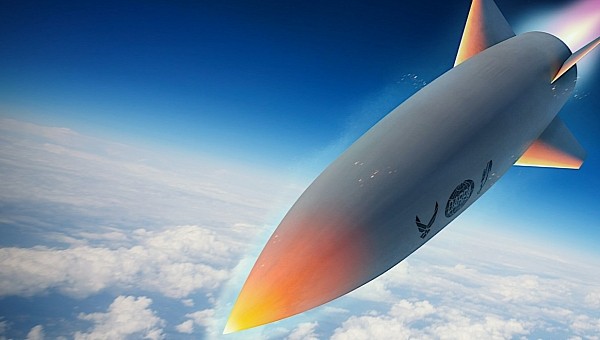When Boeing introduced the B-52 Stratofortress back in 1952, the world was unable to imagine it firing weapons that could travel at many times the speed of sound. Yet now, seventy-plus years later, not only do we have such things, but they’re also used in combat.
The number of such systems is for now small, but an increasing group of countries is working on such projects. The U.S. has more than one hypersonic weapon in progress, but today we’ll be focusing on the so-called Hypersonic Air-breathing Weapon Concept.
HAWC for short, it’s a joint project of DARPA, the Air Force Research Lab (AFRL), Lockheed Martin, and Aerojet Rocketdyne, that’s supposed to result in a weapon capable of hitting Mach 5 (3,836 mph/6,173 kph) on its way to the target, effectively making it impossible to stop.
HAWC was launched for the first time in September 2021, from an undisclosed type of airplane. It hit undisclosed speeds and flew for an undisclosed distance, but was declared a success by the parties involved in the project.
We first got wind of the thing’s true capabilities back in April 2022, when Lockheed Martin announced the first true test flight of the missile, when it hit the desired speed and an altitude of 65,000 feet (19,812 meters). Last year’s test was not to be the last, and as we wrap up the first month of 2023, we learn of HAWC performing a second one.
We’re not told where and when it occurred, but at least this time, we know what the launch platform was: a B-52, which shot the thing off into the distance, allowing it to reach a speed in excess of Mach 5, and pretty much the same altitude as before.
As per the details provided, the first stage booster of the HAWC ignited and pushed the weapon to where it needed to be for the Aerojet Rocketdyne scramjet engine to come to life and make the assembly go hypersonic.
We know the HAWC then traveled for a total of 345 miles (555 km). Sadly, we don’t know for how long the missile was hypersonic, so it’s impossible to calculate exactly how fast that distance was covered. If we go with the numbers we have, HWAC should have traveled the 345 miles in a little over five minutes. That’s almost 70 miles per minute.
This second flight appears to have been successful as well. The companies and agencies involved say they now have double the amount of data to work with than before. This will allow, of course, for more tests to be planned in the future.
It’s unclear when the project is supposed to conclude, so brace yourself for more HAWC updates in the months ahead.
HAWC for short, it’s a joint project of DARPA, the Air Force Research Lab (AFRL), Lockheed Martin, and Aerojet Rocketdyne, that’s supposed to result in a weapon capable of hitting Mach 5 (3,836 mph/6,173 kph) on its way to the target, effectively making it impossible to stop.
HAWC was launched for the first time in September 2021, from an undisclosed type of airplane. It hit undisclosed speeds and flew for an undisclosed distance, but was declared a success by the parties involved in the project.
We first got wind of the thing’s true capabilities back in April 2022, when Lockheed Martin announced the first true test flight of the missile, when it hit the desired speed and an altitude of 65,000 feet (19,812 meters). Last year’s test was not to be the last, and as we wrap up the first month of 2023, we learn of HAWC performing a second one.
We’re not told where and when it occurred, but at least this time, we know what the launch platform was: a B-52, which shot the thing off into the distance, allowing it to reach a speed in excess of Mach 5, and pretty much the same altitude as before.
As per the details provided, the first stage booster of the HAWC ignited and pushed the weapon to where it needed to be for the Aerojet Rocketdyne scramjet engine to come to life and make the assembly go hypersonic.
We know the HAWC then traveled for a total of 345 miles (555 km). Sadly, we don’t know for how long the missile was hypersonic, so it’s impossible to calculate exactly how fast that distance was covered. If we go with the numbers we have, HWAC should have traveled the 345 miles in a little over five minutes. That’s almost 70 miles per minute.
This second flight appears to have been successful as well. The companies and agencies involved say they now have double the amount of data to work with than before. This will allow, of course, for more tests to be planned in the future.
It’s unclear when the project is supposed to conclude, so brace yourself for more HAWC updates in the months ahead.





